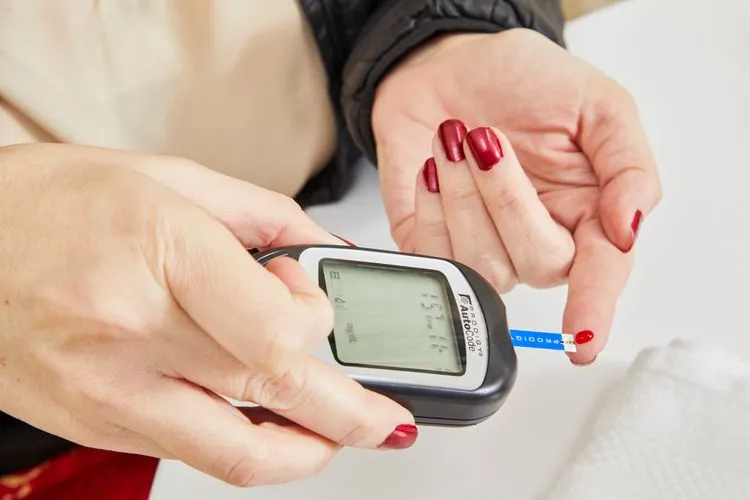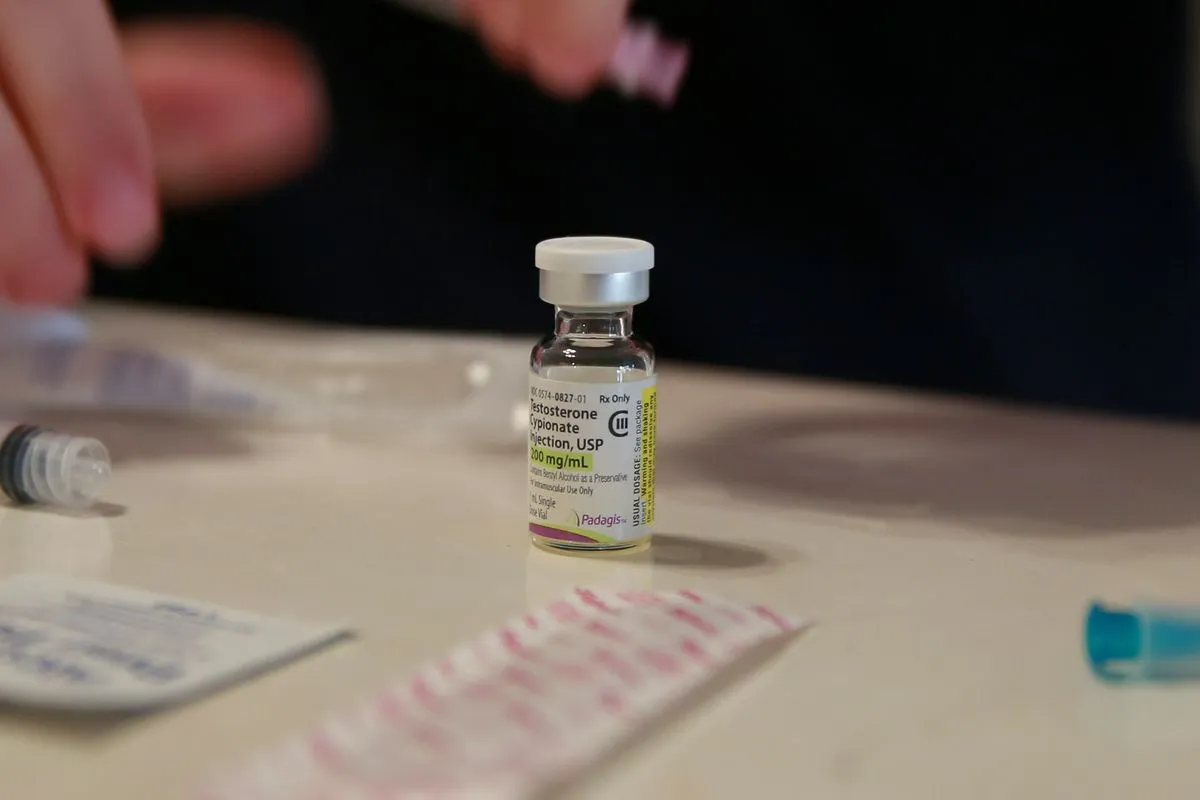Scientists Identify Potential Therapeutic Targets for Diabetic Kidney Disease
Diabetic kidney disease (DKD), also known as diabetic nephropathy, is a serious and common complication of diabetes, affecting millions worldwide. It is one of the leading causes of end-stage renal disease (ESRD), a condition in which the kidneys cease to function effectively. As diabetes rates continue to rise globally, so does the burden of diabetic kidney disease, which remains a major health challenge despite the advancements in diabetes management. Recent scientific research has made significant strides in identifying potential therapeutic targets that could revolutionize the treatment of DKD. These discoveries offer hope for more effective treatments, potentially preventing or slowing the progression of kidney damage in diabetic patients.
This article provides a comprehensive overview of the latest research into diabetic kidney disease, focusing on newly discovered therapeutic targets and the mechanisms behind them. It explores the pathophysiology of DKD, the challenges in current treatment options, and the potential breakthroughs that could change the landscape of care.
The Pathophysiology of Diabetic Kidney Disease
Diabetic kidney disease is primarily driven by the chronic effects of hyperglycemia (high blood sugar) and other metabolic disturbances associated with diabetes. Over time, elevated blood glucose levels lead to damage in the small blood vessels of the kidneys, particularly in the glomeruli, which are responsible for filtering waste and excess fluids from the blood. This damage is characterized by glomerulosclerosis (scarring), thickening of the basement membrane, and increased permeability of the glomeruli.
The pathophysiology of DKD involves a complex interplay of metabolic, hemodynamic, and inflammatory processes. Hyperglycemia contributes to the accumulation of advanced glycation end-products (AGEs), which further damage the blood vessels and kidney tissue. Additionally, kidney cells become overactive in their response to elevated glucose, triggering the release of pro-inflammatory cytokines and profibrotic factors. This creates a cycle of inflammation, fibrosis (scarring), and vascular dysfunction, which ultimately leads to kidney dysfunction and failure.
Other factors such as hypertension, dyslipidemia (abnormal lipid levels), and increased oxidative stress exacerbate the damage to the kidneys in diabetic patients. The progression of DKD is often gradual, but without intervention, it can lead to ESRD, which requires dialysis or kidney transplantation.
Current Treatment Options and Their Limitations
Currently, the management of diabetic kidney disease focuses on controlling blood glucose levels, managing blood pressure, and using medications to slow the progression of kidney damage. The primary treatments for DKD include:
- Angiotensin-converting enzyme inhibitors (ACE inhibitors) and Angiotensin II receptor blockers (ARBs): These medications help control blood pressure and reduce proteinuria (the presence of excess protein in the urine), which is a key marker of kidney damage.
- SGLT2 Inhibitors (Sodium-glucose co-transporter 2 inhibitors): This class of drugs has emerged as one of the most promising treatments for DKD. SGLT2 inhibitors help lower blood sugar levels by preventing the reabsorption of glucose by the kidneys. Recent studies have shown that these drugs can also protect kidney function in patients with diabetic nephropathy, reducing the risk of progression to ESRD.
- Glucagon-like peptide-1 (GLP-1) receptor agonists: These medications, commonly used in type 2 diabetes, have also been shown to have potential benefits in managing diabetic kidney disease. GLP-1 receptor agonists help control blood sugar and also exhibit anti-inflammatory and antioxidative effects, which may help reduce kidney inflammation and damage.
- Control of blood pressure and lipid levels: Blood pressure management through lifestyle modifications and antihypertensive medications, alongside lipid-lowering drugs, remains an important part of DKD management.
While these treatments can slow the progression of DKD and improve kidney outcomes, they do not fully reverse the damage or stop the disease from advancing. Therefore, there is an urgent need for new therapeutic targets that can provide more effective treatments for DKD, especially for patients who do not respond to existing therapies.
Newly Identified Therapeutic Targets for Diabetic Kidney Disease
Recent research has identified several novel therapeutic targets that could hold promise for the future treatment of diabetic kidney disease. These targets involve different biological pathways that contribute to kidney damage in diabetes, including inflammation, fibrosis, oxidative stress, and metabolic dysregulation. Some of the most promising therapeutic targets include:
1. TGF-β (Transforming Growth Factor Beta) Signaling Pathway
TGF-β is a key mediator of fibrosis in DKD. It is involved in the activation of fibroblasts, which produce collagen and other extracellular matrix proteins that contribute to kidney scarring. Targeting TGF-β signaling could help prevent or reduce the fibrotic process in the kidneys, thus slowing the progression of DKD. Research has shown that inhibiting TGF-β signaling can reduce kidney fibrosis and improve kidney function in animal models of diabetic nephropathy. Several drugs targeting TGF-β are currently in preclinical or clinical development, including small molecules and monoclonal antibodies.
2. Inflammatory Pathways: NLRP3 Inflammasome
The NLRP3 inflammasome is an intracellular protein complex involved in the activation of inflammatory responses. It plays a crucial role in the pathogenesis of DKD, as it is responsible for the release of pro-inflammatory cytokines such as IL-1β and IL-18. These cytokines contribute to kidney inflammation, fibrosis, and damage. Recent studies have demonstrated that inhibiting the NLRP3 inflammasome can reduce inflammation and kidney injury in diabetic animal models. Drugs targeting NLRP3 inflammasome activation are being explored as potential therapies for DKD, aiming to reduce inflammation and slow kidney damage.
3. Sodium-Glucose Cotransporter-2 (SGLT2) Inhibition Beyond Glycemic Control
SGLT2 inhibitors, which were originally developed to control blood sugar in diabetic patients, have been shown to have direct protective effects on the kidneys. These drugs not only help lower blood glucose but also reduce kidney inflammation, fibrosis, and oxidative stress. Research has shown that SGLT2 inhibitors can lower albuminuria (a marker of kidney damage) and improve kidney function in patients with diabetic nephropathy, independent of their effect on blood glucose levels. The development of new SGLT2 inhibitors and combination therapies could provide even greater benefits for patients with DKD.
4. Endothelin Receptor Antagonists
Endothelin-1 is a potent vasoconstrictor that contributes to endothelial dysfunction, increased blood pressure, and renal fibrosis in DKD. Endothelin receptor antagonists, such as atrasentan, have been investigated for their ability to block the effects of endothelin and improve kidney outcomes in diabetic patients. Clinical trials have shown that endothelin receptor antagonists can reduce albuminuria and slow the progression of DKD, making them a promising therapeutic option for patients with advanced diabetic nephropathy.
5. Targeting the Renin-Angiotensin-Aldosterone System (RAAS)
The RAAS pathway plays a critical role in regulating blood pressure, fluid balance, and kidney function. In patients with diabetes, overactivation of the RAAS contributes to kidney damage and proteinuria. While ACE inhibitors and ARBs are widely used in the management of DKD, newer approaches to targeting the RAAS, such as mineralocorticoid receptor antagonists, are being explored. These drugs may offer additional benefits in reducing kidney damage and improving outcomes for patients with DKD.
Challenges and Future Directions
While the identification of these new therapeutic targets is promising, several challenges remain in translating these findings into effective treatments for DKD. The complexity of DKD, which involves multiple pathways and mechanisms, makes it difficult to develop a single therapy that can address all aspects of the disease. Furthermore, safety and efficacy in clinical trials must be thoroughly evaluated, as some potential therapies, such as TGF-β inhibitors, have shown mixed results in early trials.
In addition, the high cost of developing and testing new drugs, along with the regulatory hurdles involved in bringing new treatments to market, can delay the availability of these therapies to patients. Nonetheless, the increasing investment in research and the collaboration between academic institutions, pharmaceutical companies, and regulatory bodies offer hope that new treatments for DKD will be available in the near future.
The identification of potential therapeutic targets for diabetic kidney disease marks a significant step forward in the fight against this debilitating condition. Targeting specific pathways involved in fibrosis, inflammation, and oxidative stress could offer new opportunities to prevent or slow the progression of DKD, improving the quality of life for millions of people with diabetes. While there are still many challenges to overcome, the advancements in our understanding of the underlying mechanisms of DKD provide a strong foundation for the development of more effective therapies. With continued research and innovation, the future of diabetic kidney disease treatment looks promising, offering hope for better outcomes and a reduction in the global burden of kidney disease.























